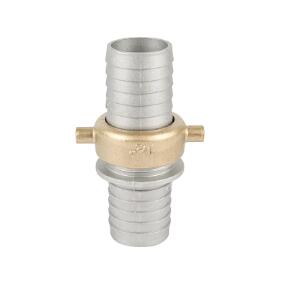Key Factors in Selecting the Right Size of Pin Lug Coupling for Your Hose
2024-08-21
Choosing the appropriate size of a Pin Lug Coupling for your hose is crucial for ensuring a secure and efficient connection. Pin Lug Couplings are commonly used in various industries, including firefighting, agriculture, and industrial water transfer. Selecting the right size involves considering several important factors that influence both the performance and safety of your hose system. In this blog, we’ll explore the key considerations to help you make the right choice.
1. Hose Diameter
The first and most obvious factor to consider is the diameter of your hose. Pin Lug Couplings are designed to match specific hose diameters, so it's essential to ensure that the coupling size corresponds to the hose size. Using a coupling that is too large or too small can lead to leaks, poor performance, and potential safety hazards. Common hose diameters include 1.5 inches, 2 inches, and 3 inches, but sizes can vary depending on the application.
2. Flow Rate Requirements
The flow rate of the liquid or material passing through the hose is another critical factor. The size of the Pin Lug Coupling affects the flow rate, with larger couplings generally allowing for higher flow rates. It’s important to select a coupling that can handle the required flow rate without causing restrictions or excessive pressure drops. Consider the application’s specific flow requirements and choose a coupling size that ensures efficient fluid transfer.
3. Working Pressure
The working pressure of the hose system must be compatible with the Pin Lug Coupling. Each coupling is rated for a certain pressure range, and using a coupling that cannot withstand the system’s pressure could result in failures or dangerous situations. Always check the pressure rating of the coupling and ensure it matches or exceeds the working pressure of your hose system.
4. Material Compatibility
Pin Lug Couplings are available in various materials, including aluminum, brass, and stainless steel. The choice of material should be based on the type of liquid or material being transferred through the hose. For example, if you’re working with corrosive chemicals, stainless steel might be the best option due to its resistance to corrosion. Ensure that the material of the coupling is compatible with both the hose material and the fluid to prevent degradation and ensure longevity.
5. Environmental Considerations
The environment in which the hose and coupling will be used can also influence your selection. If the hose system will be exposed to harsh conditions, such as extreme temperatures, UV radiation, or abrasive materials, you’ll need to choose a coupling that can withstand these factors. Durability and resistance to environmental conditions are essential for ensuring long-term performance and safety.
6. Ease of Installation and Maintenance
Finally, consider the ease of installation and maintenance when selecting a Pin Lug Coupling. The coupling should be easy to attach and detach, especially in applications where hoses need to be frequently connected and disconnected. Additionally, consider the maintenance requirements of the coupling. Choosing a design that is easy to clean and maintain can save time and reduce the risk of contamination or damage.
Conclusion
Selecting the appropriate size of Pin Lug Coupling for your hose involves more than just matching diameters. By considering factors such as flow rate, working pressure, material compatibility, and environmental conditions, you can ensure a secure and efficient connection that meets the demands of your application. Taking the time to choose the right coupling size and material will help prevent leaks, improve performance, and enhance the safety of your hose system.



